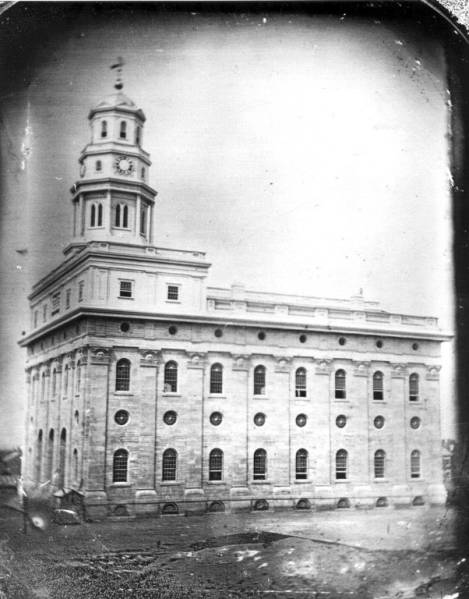
Beginning the last chapter of the book:
When leadership of the Church of Jesus Christ of Latter-day Saints fell to the Quorum of the Twelve Apostles after the martyrdom of Joseph Smith, they faced one crisis after another. The Prophet was dead. Many of the Saints wondered what this meant and what it portended for the future of the Church. They would have been less than human if, for at least a moment, doubts had not crossed their minds. Enemies from the communities around Nauvoo were pressuring the Saints, often violently, to leave. Property held by the Mormons would have to be abandoned, and those who could get it cheap would enjoy huge advantages. Plans were underway to move thousands of people through hostile wilderness, across the plains and the Rocky Mountains to an essentially unknown land beyond the current borders of the United States. To make matters worse, militant anti-Mormons, who had already shown what they were capable of, were threatening the freedom and the physical safety of the apostles themselves, making orderly planning very difficult.
In the midst of all this, the Twelve issued a proclamation to the world, which testified, among other things,
that the Jews among all nations are …commanded, in the name of the Messiah, to prepare to return to Jerusalem in Palestine, and to rebuild that city and temple to the Lord. And also to organize and establish their own political government, under their own rulers, judges and governors, in that country. For be it known unto them that we now hold the keys of the priesthood and kingdom which are soon to be restored unto them. Therefore let them also repent, and prepare to obey the ordinances of God.[1]
The process by which this commandment has begun to be fulfilled has been a long and complicated one, far beyond the scope of the present book. I have already offered a brief discussion of the Zionist movement and of the return of the Jews to Palestine. My intention in this chapter is to survey, again in a brief and inadequate way, the involvement of the Church in the gathering of the Jews and in the Near East in general. However, I intend to glance not merely at past history in the region, but to attempt to discern, through the scattered scriptural and other clues that have been given to us, something of the future of the Church and the Near East in the divine plan. This is an ambitious undertaking, and a risky one. It must be stressed again that what I say here represents only my own reading of the information available.[2]
[1] Printed in England and bound with The Latter-day Saints’ Millennial Star 6 (1845).
[2] 1 must repeat that, for information on the history of the Church in the Holy Land and in the Near East generally, I have been heavily (though not entirely) dependent upon Baldridge, Grafting In, and Barrett, The History of the Mormons in the Holy Land.
Posted from Paris, France










